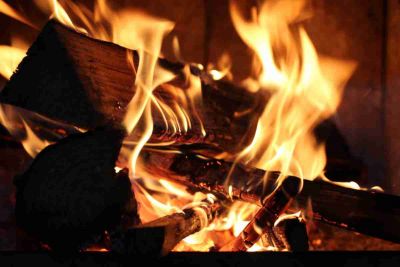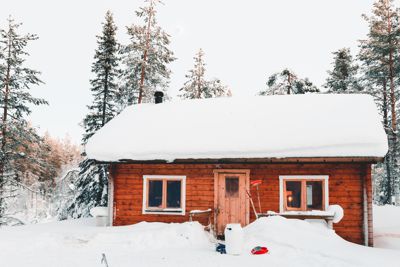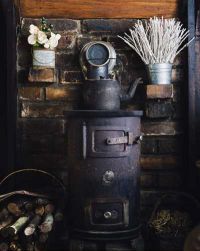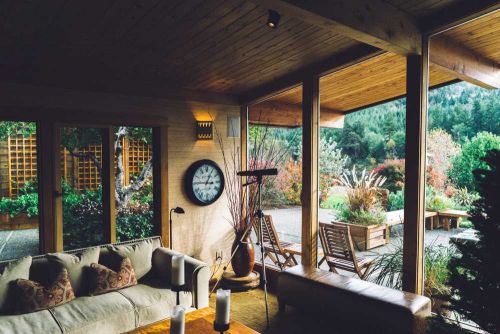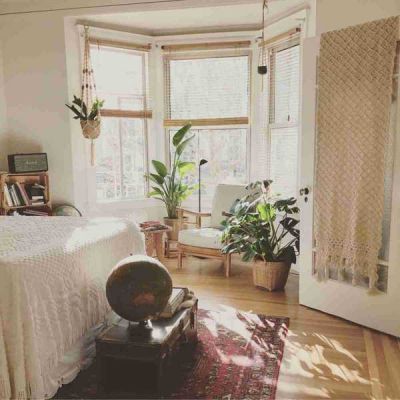
Seniors over the age of 65 are three times more likely to be injured or lose their life in a home fire than younger people. Home fires are more likely to occur during the winter, when various heating methods are being used. Wood stoves create a pleasant atmosphere, heat the home well, and are commonly seen in senior’s homes, but they can present risks. If you have family, such as elderly parents, who are vulnerable and use a wood stove, there are some precautions you can take to help keep them safe and give yourself some peace of mind.
Regular maintenance and cleaning
Regularly maintaining and cleaning wood stoves can help to keep older relatives safe. Ideally, this should be done by a professional who can also inspect the flue for any problems, and make sure that everything is working as it should. Creosote can build up in the wood stove and chimney, and will need cleaning thoroughly. This should be done at the end of each winter, or whenever your loved ones are done using their wood stove for the year, and at least once during the winter while it’s being regularly used. You may need to arrange regular maintenance for seniors in case they forget or are unaware that it needs doing.
Prioritize safety
Safety should always come before anything else when warming the home. In some circumstances, the risks that a wood stove presents outweigh the benefits, and opting for alternative heating solutions can be a better option. For example, a senior with dementia may leave their wood stove unattended or play with it out of confusion, or they may have a physical illness, like arthritis, that makes it difficult for them to manage a wood stove. If they live with someone else who can take responsibility for the wood stove then it’s not as big of a problem, but for seniors living at home alone it’s important for their loved ones to assess the risks and how safely their wood stove can be used. Assistive technology can give you peace of mind if your loved one lives alone, as they can call for help easily if something goes wrong while they're using the stove.
Precautions family can take to protect seniors
There are plenty of things loved ones can do to reduce the risk of a fire or injuries from a wood stove. Placing it on a fire-resistant base will reduce the chance of hardwood or carpeted floors becoming hot and catching fire. Ensuring any wood used for burning is dry and well-seasoned, which usually takes about two years, helps to minimize the amount of creosote and tar that builds up in the wood stove and chimney, as well as reducing the amount of smoke produced. Logs should be kept away from the wood stove, as stacking them next to it can increase the chance of a fire. Seniors may benefit from having a fireguard in place to reduce the risk of them falling into the fire or the temptation to go near it. This can be particularly helpful if someone else in the home is responsible for the wood stove and there’s no need for seniors to touch it at all.
Seniors can safely use and enjoy their wood stove to warm their homes, but loved ones can take some precautions and follow basic safety tips to reduce any risks and give themselves peace of mind throughout the winter.
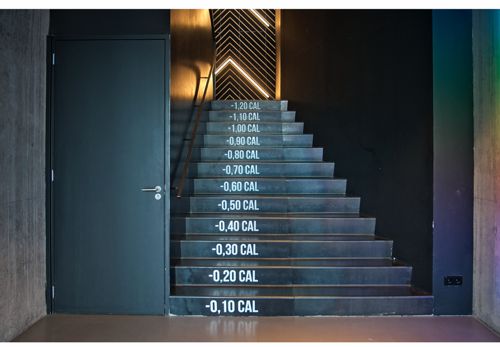
65% of Americans prefer to workout at home than at a local gym. Having a home gym is convenient and can be purpose-built to suit your fitness needs and, with the addition of some luxury features, can help you to de-stress and relax at the end of the day, too. Nothing says luxury like a home gym that’s fully outfitted. By incorporating an extensive range of fitness equipment, a hot tub by a warming patio heater, and a room dedicated to yoga where you can meditate by a cozy fireplace, your home gym can be a truly relaxing and luxurious retreat for boosting your health and wellness.
Choosing the right fitness equipment for you
Kitting your home fitness room out should be done to your needs, rather than buying equipment that you think should be in a gym but that you have no intention of using. If you enjoy jogging outside for cardio and want a home gym for weight training then prioritize free weights and weight machines. Similarly, if your goal is to shed some pounds and improve your fitness, then you should look into some cardio machines. Elliptical trainers, treadmills, and exercise bikes are all good options that allow you to have variation with your workouts. Having a television or sound system can provide you with some entertainment and motivation while you’re working out, so consider installing these, too.
Adding a touch of luxury and relaxation
One of the perks of a gym membership is that you can get additional features, such as hot tubs, access to a pool, and saunas. If you’ve got the space, then adding some of these touches to your home fitness suite can be well worth it. Not only can they help you to relax after a long day at work, but it can also help with recovery times after intense exercise. Having an outdoor pool and installing a hot tub area with it can be an option if you don’t have space indoors. Including a cozy outdoor fire or patio heater can make the space feel even more inviting and you’ll be more likely to use it in colder months and in the evenings too.
Creating a cozy yoga area
Perhaps all you want from your fitness room is somewhere warm, cozy, and relaxing where you can practice yoga, pilates, or meditation. Creating an ambiance will be an important part of this and a fireplace can be a great feature that helps to warm the room too. Space is key, so keep either a whole room or a small part of your fitness room free from bulky equipment and away from noise. Calming music, scented candles, and dimmed lights can be all you need. Basic equipment, such as a yoga mat, pilates balance ball, and resistance bands can be kept nearby for the days you feel like mixing up your workouts.
A fitness room in your home can be a great investment that adds some real luxury to your home. For cozy and relaxing spaces, fireplaces can significantly contribute to the ambiance, as well as being a great focal point that makes any space feel inviting.
Have you ever noticed that your house is extra chilly in certain areas? While this phenomenon may be associated with ghostly activities, if the cold is close to an area with windows or doors you can breathe a big sigh of relief. Thresholds are one of the toughest areas of the house to insulate and could be where a lot of your heat is escaping. But using the right materials will help keep the cold from knocking at your door this winter.
Some of the typical steps that can be taken to insulate a house include weatherstripping windows and doors, insulating the attic and box sills and caulking. The primary end of these methods is to stop excess cold air from infiltrating the house. But the materials you choose can play a major part in temperature control as well. This is because heat transfer is a form of conduction. Keeping your home better insulated with less conductive materials can help that wood stove go further to keeping you warm and prevents as much heat from going to waste.
Quantifying Heat Transfer with R-Value
To understand how insulation is measured, we have to take a look what engineers and builders call the “R-value.”
The R-value is a metric that is used to quantify a barrier’s effectiveness at block the conductive flow of heat. The higher this number is, the more effective it is at stopping heat from leaching through.
The transfer of heat through an object is determined by the difference in temperature between each side and the material’s resistance to conduction. This difference can be divided by the R-value and multiplied by the total surface area of the barrier to give the total amount of heat transference through the barrier in terms of BTUs per hour.
For a variety of reasons, including security, weather resistance and superior R-value, hollow metal doors are going to be the best choice for almost any exterior application. Beyond the door’s frame, the next most influential property to R-value is going to be the composition of the door’s inner core..
A Comparison of Cores
You may not think about it much, but with the exception of antique doors, the interior is normally hollow. If this weren’t the case, doors would be extremely heavy and material-intensive to produce. While modern solid core doors do exist, they are typically retained for specialized purposes where the additional expense is deemed necessary.
So what’s inside a hollow door? To add additional stiffness, weather resistance and insulation, door manufacturers fill the inside of the door with some type relatively lightweight material. This core can be made out of a variety of materials which affect the door’s cost and structural properties. For the purposes of this article, we’ll be focusing particularly on insulation.
Honeycomb
The first common type of core found in doors is called a “honeycomb core,” named after the hexagonal lattice it is made up of. You may be surprised to hear that this material is actually a type of cardboard. However, in this case it is hardened with a special resin to increase structural rigidity. The honeycomb pattern allows manufacturers to maximize the stiffening property of the material without adding excessive weight to the door. This provides significant durability and is cost-effective to manufacture but doesn’t provide much in the way of insulation. It is also effective at disrupting soundwaves to provide a reasonable level of sound dampening. With a low R-value, the doors have good stability but aren’t the best for exteriors. If you’re looking to save on energy costs and minimize the amount of temperature transfer through thresholds then honeycomb core doors aren’t going to be the best choice.
Polystyrene
The next, more insulating material is polystyrene, which is sometimes abbreviated as EPS (for expanded polystyrene). EPS cores are both cost effective and provide fairly good insulation. It is the same type of foam you might find as packing material in boxes or in the shape of disposable coffee cups. The material provides stiffness and helps serve to prevent moisture from getting inside the hollow of the door. With a thermal resistance ranging from R-3 to R-5, EPS is a better insulator than honeycomb but still doesn’t offer the most insulation against cold temperatures.
Polyurethane
Polyurethane is more dense than polystyrene and therefore provides more resistance to temperature change. During the manufacturing process, it can start out as a liquid spray that expands and dries, filling the inside of the door thoroughly and bonding to the frame which adds additional strength to the door. Alternatively, there are versions that are installed as rigid boards more like polystyrene, but with the added density of polyurethane. The material is ideal for exterior openings in cold climates as it provides some of the best insulation available. The lowest level of polyurethane insulation is going to be as good or better than the best level of polystyrene insulation. It’s R-value is normally somewhere between R-6 and R-8.
Part of polyurethane’s propensity for insulating is due to pockets of low-conductivity gas contained in the material known as hydrochlorofluorocarbon. During the first two years after manufacturing, some of this gas escapes the pockets and the door’s insulative properties are slightly reduced. However, this is a fairly minimal reduction and after the first two years the hydrocholorofluorocarbon content of the polyurethane will remain relatively unchanged.
The Bottom Line
For those looking for a reasonable amount of insulation, both EPS and polyurethane core doors will be sufficient. But if you live in a colder climate, going polyurethane is most likely worth the slight additional cost of the material.
Hopefully this guide helps to give a good basic overview of common door materials and their insulative properties. While nothing replaces the warmth of a good fire, adding a little more insulation can help those logs go just a bit further to warm the inside of your house and keep cold from barging in. Unless, of course, it turns out the cold spots are from a ghost after all.
More than 12 million households are currently reliant on wood-burning stoves for heat generation according to the U.S. Environmental Protection Agency. While the majority of the stoves are located in the living rooms of American homes, it is not uncommon to find a wood stove right in the heart of the home: the kitchen. Although wood stoves are very versatile and can easily be placed here, there are a few considerations, such as the following, that you need to keep in mind before choosing the right unit for your home.
Placement of your stove is very important
Many modern-day kitchens boast extractor fans that aim to remove unpleasant odors from the kitchen. These fans create negative pressure which is not suitable for wood burning stoves which rely on positive chimney pressure to eradicate combusted gases from the room. When placing your stove, make sure it is not too close to your extraction fan as you don’t want the smoke to be circulated back into the kitchen. This can easily be avoided by either installing an air vent in the room or investing in a stove that receives air externally.
Safety first
While a wood stove can be installed virtually anywhere in the kitchen, it is important to avoid placing it too close to other appliances as it can cause them to overheat. Don’t keep any combustible materials near the stove either as there is always a slight possibility of embers falling out. For added safety, have a smoke detector installed in your kitchen to alert you of any looming dangers that require your attention.
A wood stove can boost the visual appeal of your kitchen
Modern-day wood burning stoves are available in a host of sizes, designs, and finishes that will complement any kitchen beautifully. Whether you have a country-style kitchen with a lot of wood finishes or one that is ultra-modern, you are bound to find a wood stove that fits the room perfectly. While an older, classical stove will enhance the ambiance of your somewhat-whimsical kitchen nicely, a sleek design will look striking in a more contemporary setup. You don’t have to try to match the exact color and style of your existing cooking and cleaning appliances including your dishwasher, oven, and fridge, but you can opt for a wood stove that will not only look good but suit your needs in terms of practicality as well.
Yes, you can cook on your wood stove
Depending on the type of wood burning stove you invest in, you might find yourself able to cook on it. Even if you do have a kitchen filled with state-of-the-art appliances you might find it intriguing to cook on your wood stove, just like our great-grandparents did many years ago. A lot of people enjoy the flavor of wood-cooked food as it has a distinct, natural taste to it. Not only does the stove top enable you to cook and warm a large variety of dishes but it will also make it possible to prepare food during power outages if you don’t have a gas cooker.
A wood-burning stove can be a welcome addition to any kitchen. Not only will it heat up your entire home but it will also make for a beautiful focal point that enhances the appearance of the most frequented room in the house tremendously.
Cassandra Pearson
One recent study found that fall is America’s favorite season (among 29% of respondents). Additionally, Christmas is consistently named as the nation’s favorite holiday, with Thanksgiving close by in almost every poll. It’s no surprise, then, that fall and winter are often associated with cozy memories, warmth, quality time with family, and times of joy. If you are planning a seasonal getaway to your cabin this fall or winter, you may already be dreaming about making memories like the ones listed above.
An excellent way to prepare for your cozy getaway is to enhance the rooms in your cabin. If you are looking for ways to create a warm and welcoming feel to your space, explore these top design strategies.
Find the right fireplace for your space
Optimizing your cabin space for a cozy getaway starts with choosing the right fireplace. Fireplaces are not only a design element that enhances overall ambiance, but they also provide a practical way to heat a room. Rather than picking a fireplace that appeals to you online, it’s essential to ensure that your chosen fireplace fits the size of your space, the colors in your cabin, and that it meets your needs. Start by measuring the desired area you’d like the fireplace to cover, and contact a professional for recommendations. Next, choose a fireplace that works well with your future or existing decor (depending on your plans for the space). Finally, decide whether you are looking for a gas fireplace or a wood burning option. Carefully assessing each of these elements will ensure that you get the coziest feel from your new fireplace.
Add “warm” decor elements
Your cabin decor is another crucial component of how “warm” each room feels. When painting and adding decorative elements, choose colors that reflect natural elements from the season of your choice. A color palette that includes brown, red, and dark orange shades is an excellent way to capture the feel of falling leaves, pumpkins, and maple syrup. For a warm winter feel, dark green, brown, and red make the perfect starting color palette. To add physical warmth, make blankets, pillows, and throws part of your decor.
Create a DIY beverage station
Whether your getaway is planned for fall or winter, a DIY beverage station is a fun way to add even more coziness to the experience. Your guests can enjoy a delicious, warm cup of cider or hot cocoa at their convenience on chilly days. In addition to the actual beverage being served, provide enhancements such as caramel, marshmallows, whipped cream, and sprinkles.
If you’re ready for your coziest-ever cabin getaway this fall or winter, following the above tips is a great way to get started. Make memories that will last a lifetime for both you and those who will be traveling with you!
Cassandra Pearson
Old and traditional wood-burning appliances are amongst the leading indoor pollutants that can cause asthma attacks, cancers, or other respiratory diseases. However, new alternatives have been developed to make wood burning appliances more eco-friendly. Through those efforts, multiple alternatives have been created to allow homeowners to take control of their indoor air quality.
Efficient Alternatives
Stoves, heaters, dryers, and fireplaces all play a significant role in the air quality in your home. Old wood burning appliances are inefficient and burn off carbon monoxide. But current models have been able to significantly reduce emissions while doing an even better job at warming you and your home. Older wood burning appliances can produce up to 30 grams of smoke per hour, with the EPA’s performance standard being 4.5 grams per hour. Electric appliances also offer eco-friendly benefits with traditional satisfaction. These appliances are easily installed and do not need a gas or vent line to work, while gel and biofuel stoves add another environmentally conscious option that also provide eco-benefits. From current efficient wood burning models to electric and biofuels, there are several alternatives to tackle your indoor air pollution.
Keep It Simple, Use Water
The presence of water can have a significant impact on the quality of air in your home. While humidity might not be the first guess for cutting into the presence of indoor pollutants, it might be the smartest. It is common for indoor air pollutants to hold a slight electric charge. A water source in the home such as a pond or fountain can trap these allergens and improve the air quality. These water sources can also humidify the room and change the air. Humidity levels play a large part in the air quality in your home with the ideal level staying around 45 percent. If this level rises above 60 percent, it can run the risk of forming mold or mildew in your home causing major health problems. If these levels dip under 30 percent, anything from skin irritation to a respiratory infection is possible. Simply taking care of your indoor humidity levels can go a long way.
Take Matters Into Your Own Hands
Maintaining a high standard indoor air quality is important to the health of any homeowner. With efficient wood burning appliances, you can enjoy their traditional benefits while working to reduce the pollutants in your home. Electric, gel, and biofuel appliances provide alternatives with the same comfort of traditional models. By enjoying these appliances responsibly as well as maintaining an acceptable humidity level, your indoor air quality will improve drastically.
Cassandra Pearson
Laura Streitman says deciding to install three wood-burning fireplace inserts in her Butler County home was not a tough decision.
“It was the cost,” she says about heating the all-electric home. “The first bill we got, I think, was about $650.”
The closed circuit test will tell you the voltage drop across the main operator coil. With the switch or thermostat closed, place your meter leads on the TH and TP terminals and measure your drop in mVDC.
To ensure a smooth ignition, when the valve first opens after turning on the main burner, no more than four (4) seconds should expire before the burner has completely lit off. Although problems with delayed ignition are most likely to occur with propane (because it is heavier than air), it can still affect natural gas appliances.
Trouble Shooting Main Burner Outage on a Gas Fireplace or Stove
1. Ensure that main burner goes out on its own and pilot light remains lit. If pilot goes out as well, refer to 'Pilot Flame Outage'.

